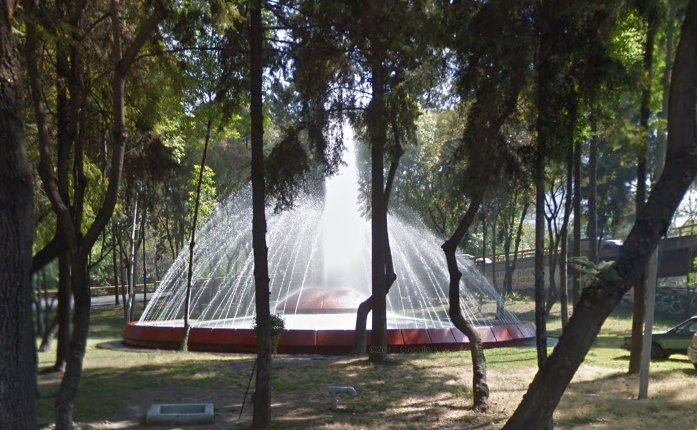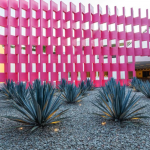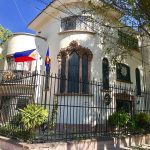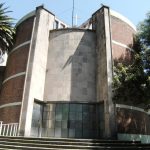




The Glorieta de los Hongos is a major landmark known mostly to motorists. It’s also something of a successful re-working of a previous urban work.
Today, four fountains are split from an original work into the leaves of a classic cloverleaf interchange. These fountains originated as the centerpiece to a simple “glorieta” on the Avenida Ejercito Nacional. That original, quite giant quatrefoil, fountain, was dedicated in 1949. It was officially named the “Fuente de la Nereida.” But the shape of the four outer fountains led to the far more popular name, the “Fuente de los Hongos,” i.e.; the Fountain of the Mushrooms.
The original fountain, in the shape of a barbed quatrefoil, was by architect Enrique Martínez del Campo. He is thought to have taken inspiration for the four mushroom-shaped fountains from Carlo Maderna’s 1613 fountain in Saint Peter’s Plaza in Rome. Bernini later copied that original to make the pair we see today.
The water streaming down over the hemispheric shapes, here and in Rome, explains the “mushroom” appearance. Each fountain remains big, and gives an idea of the scale of the original Glorieta de los Hongos. A sculpture of Nereida, one of the mythical daughters of Poseidon, was created by artist Manuel Mendoza. That work crowned the glorieta until 1975 when the Circuito Interior was built. The Nereida is today in the Jardín de la Ninfa, as the park was renamed, about 15 minutes to the north in Azcapotzalco.
Today the four corner gardens each have one of the mushroom fountains. And, like the leaves of the cloverleaf, each is in a different neighborhood.
Although visitors to the Polanco or the Anzures areas aren’t likely to visit any of the four small parks, they are often passed. Traffic on the Circuito Interior and the surrounding streets is nearly always significant.

Nearest at 0.41 kms.

Nearest at 0.53 kms.

Nearest at 0.59 kms.

One of Mexico City's true landmark hotels . . .

The seat of the Filipino Diplomatic Mission to Mexico . . .

The seat of the Diplomatic Mission of Bolivia in Mexico . . .

One of the early round churches, this one stands out in Verónica Anzures.

One of Mexico City's oldest commercial shopping centers